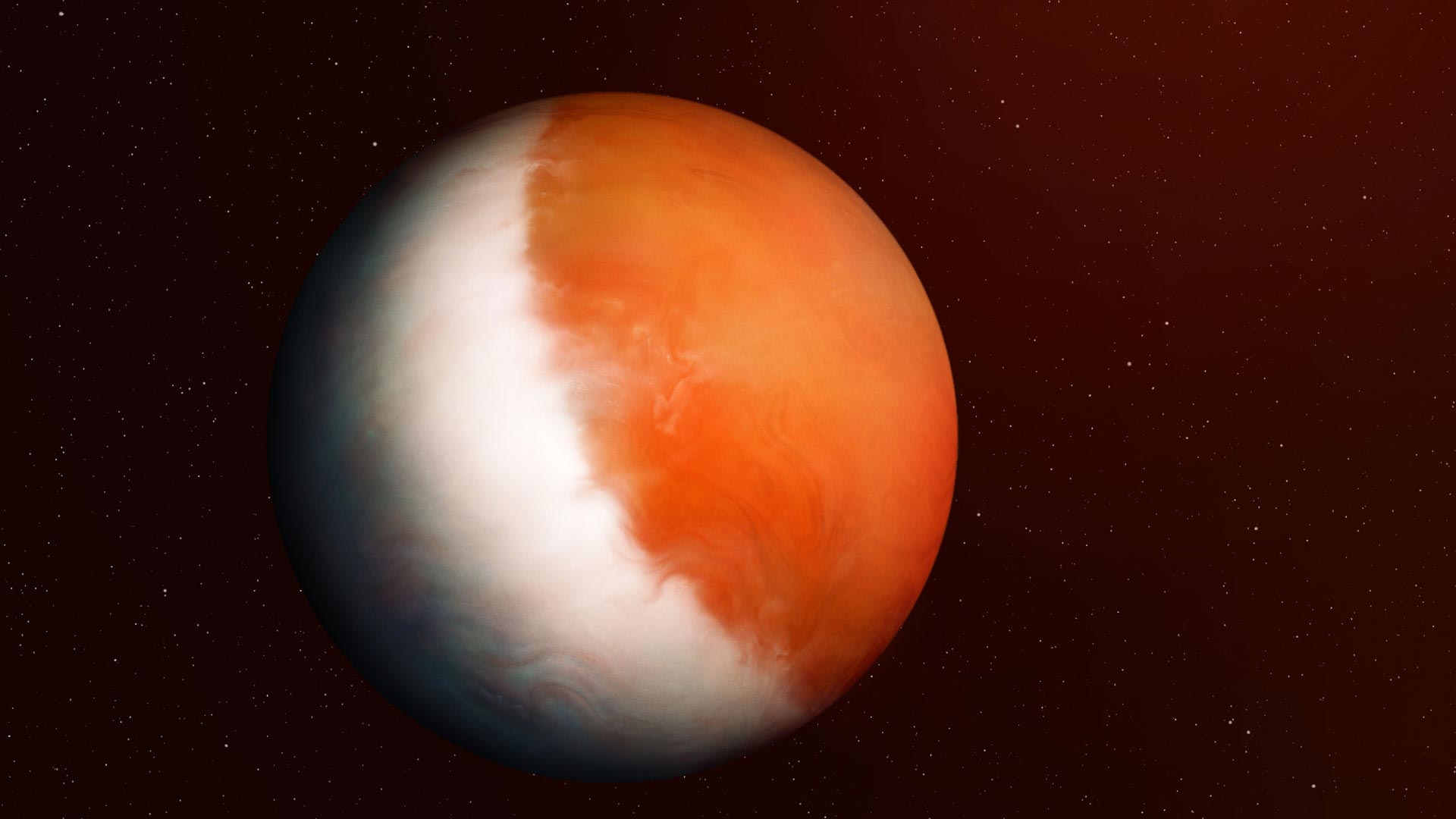
Four hundred light years distant, a planet orbits its star so closely and rapidly that a complete year lasts less than a day. Astronomers have now created a three-dimensional map of this planet, revealing a world where temperatures soar high enough to disassemble water molecules into their basic atoms.
This planet, known as WASP-18b, is categorized by astronomers as an ultra-hot Jupiter: a gas giant approximately ten times the mass of Jupiter, situated in a 23-hour orbit that scorches its surface to almost 5,000 degrees Fahrenheit. Utilizing data from the James Webb Space Telescope, a research team co-led by Cornell postdoctoral researcher Ryan Challener has generated the first authentic 3D temperature map of an exoplanet, showcasing distinct climatic regions across its blistering surface.
The mapping method, known as spectroscopic eclipse mapping, operates by observing the planet vanish behind its primary star. As various sections slip out of sight, slight alterations in the light disclose temperature differences across the planet’s surface. By investigating multiple wavelengths, each targeting various altitudes in the atmosphere, the team reconstructed a three-dimensional representation.
“Eclipse mapping enables us to visualize exoplanets that we cannot observe directly, due to the overwhelming brightness of their host stars. With this telescope and the new technique, we can start to comprehend exoplanets akin to our solar system neighbors.”
A Domain of Extremes
The map indicates a planet segmented into climatic zones, although nothing resembling Earth’s temperate regions. The dayside of WASP-18b, which perpetually faces its star owing to tidal locking, showcases a circular hotspot where starlight impacts most intensely. This area registers the highest temperatures and intriguingly exhibits reduced water vapor relative to adjacent regions.
This discovery corroborates a theory that remained unconfirmed until now: at extreme temperatures, water molecules disintegrate. The heat effectively shatters H2O into hydrogen and oxygen atoms, a phenomenon termed thermal dissociation. Encircling the central hotspot is a comparatively cooler ring, where temperatures drop sufficiently for water to remain whole.
Achieving this technique necessitated remarkable precision. Exoplanets generally emit less than 1% of their host star’s brightness, and eclipse mapping requires measuring tiny fragments of that already-faint signal. Each measurement captures light from specific areas as they rotate into and out of view, enabling the researchers to create a brightness map pixel by pixel.
Challener articulates the challenge clearly: “You’re seeking changes in minute sections of the planet as they vanish and reemerge into view, making this extraordinarily demanding.”
From Flat to Full
This new research builds upon a 2D map the same team published in 2023, which utilized a single wavelength of light. By extending to multiple wavelengths, each corresponding to different levels of the atmosphere, the researchers could layer these into a complete three-dimensional representation. Different wavelengths penetrate to varying depths: colors absorbed by water expose the outer atmosphere’s water layer, while wavelengths that traverse water investigate deeper strata.
This technique revolutionizes how astronomers can explore distant realms. Where earlier methods averaged temperatures over an entire hemisphere, eclipse mapping identifies regional characteristics. In the case of WASP-18b, this led to the realization that winds seemingly do not redistribute heat from the hotspot, preserving the temperature gradient.
“We believe this serves as proof that the planet is so intensely hot in this area that it’s beginning to break down the water. This had been theorized, but it’s tremendously thrilling to witness it through real observations.”
Hot Jupiters like WASP-18b constitute hundreds of the over 6,000 confirmed exoplanets, with many orbiting closely enough to their stars for detailed examination. This technique holds promise across this population, potentially unveiling whether each world develops similar hotspots or exhibits diverse atmospheric circulation patterns.
Further JWST observations could refine the resolution of these maps, possibly exposing smaller-scale features. The telescope’s sensitivity enables the detection of atmospheric details that were mere conjecture a few years back. Consequently, astronomers can now initiate comparisons of exoplanet atmospheres in the same manner as they do with cloud structures on Jupiter or dust storms on Mars, progressively clarifying alien worlds one temperature map at a time.
[Read more at Nature Astronomy](https://doi.org/10.1038/s41550-025-02666-9)
There’s no paywall here
If our reporting has enlightened or inspired you, please consider making a contribution. Every donation, regardless of size, empowers us to continue providing accurate, engaging, and reliable science and medical news. Independent journalism requires time, effort, and resources—your support guarantees we can keep uncovering the narratives that matter most to you. Join us in making knowledge accessible and impactful. Thank you for standing with us!